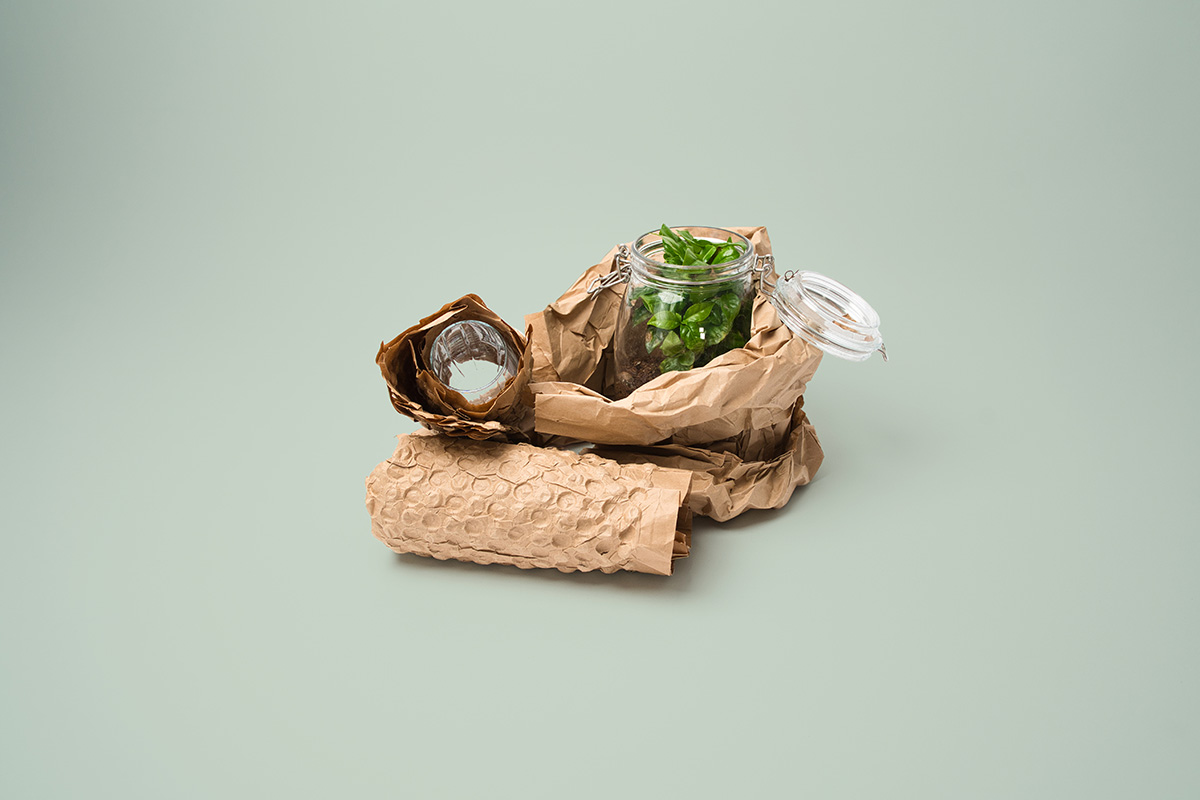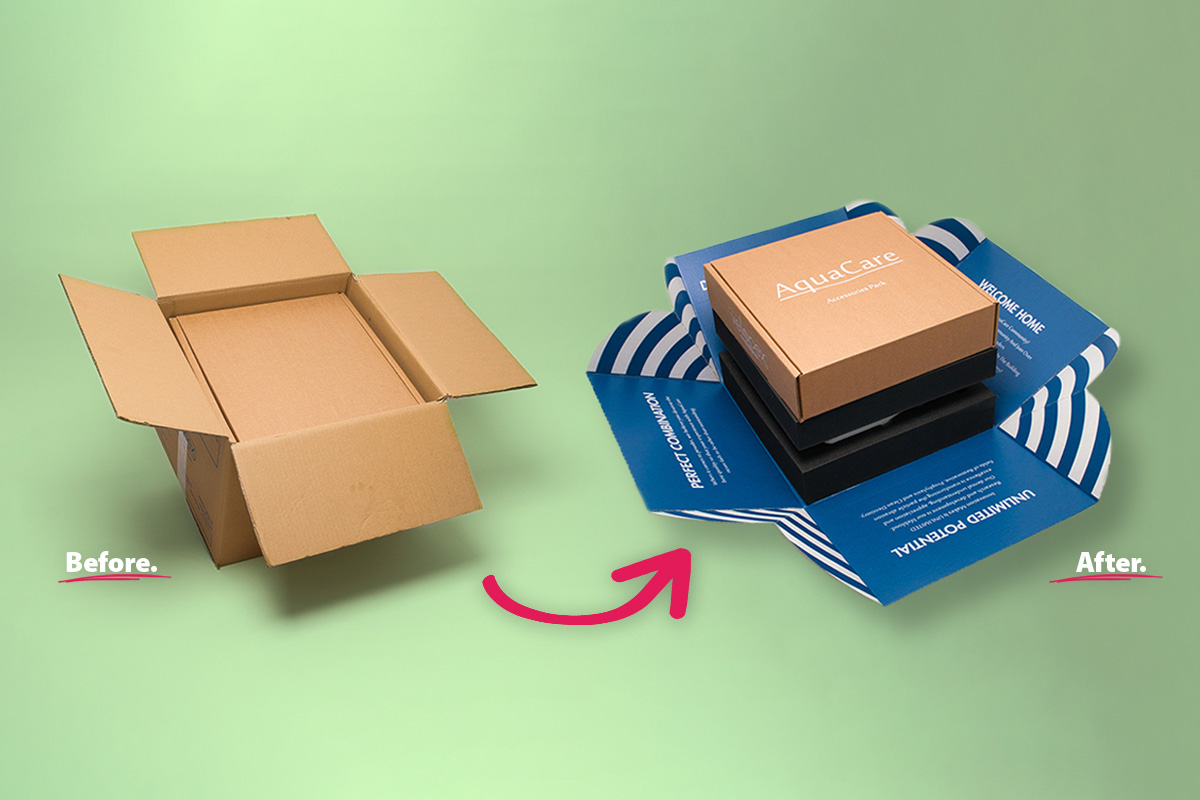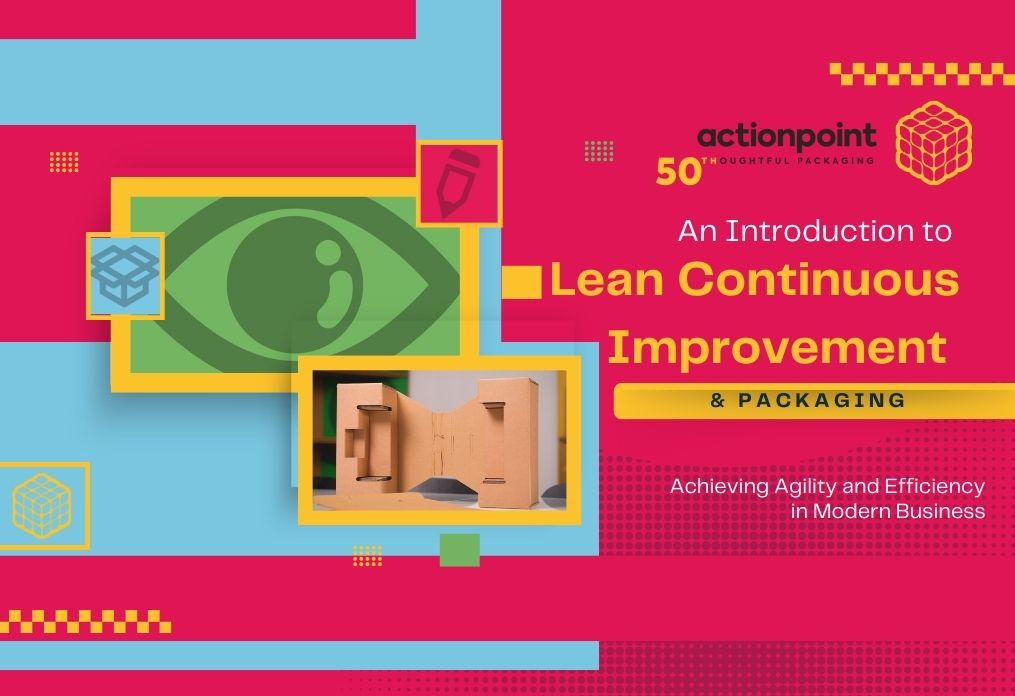Actionpoint has worked with businesses across a variety of industries to solve their packaging problems since 1975. Decades of experience have been distilled into our Insight packaging process review. This audit casts an expert eye over your packaging – including function, appearance, performance, and supply – to identify how to improve your operation, achieve your packaging goals, and save you time and money.
Over the years, it has become clear there are three key areas where companies need the most help. Broadly, it’s about driving efficiencies, taking environmental steps, or creating a new design for a product launch or rebrand. And so, the Insight audit has been tailored to focus on each of these themes. However, it’s important to note they are not inflexible. An Insight review can cover one, two, or all three points. The only constraint is how much time you can spare on the day of the auditor’s visit to your premises.
Read on, to find out more about each type of Insight audit and how they can support your business.
1. Efficiency Insight
Let’s take one common example of an organisation’s need to boost efficiencies. Many companies have peak times, such as Black Friday or holiday seasons, when they are packing 25–50% more of their goods. Rather than suggesting taking on more staff during a busy sales period, Insight finds ways to speed up packing and order fulfilment using the current team. The audit looks at the layout of the warehouse, type of equipment being used, style of boxes, tape systems, and so on, to assess what adjustments can be made to make operatives’ jobs easier and increase productivity. The idea is to get more out of the same – or, sometimes, more out of less!
At Actionpoint, we have a wide range of packaging expertise in-house as well as links with highly respected external specialists. This means we have all the resources necessary for an in-depth audit whether it requires conducting timings on pack trials or reviewing warehouse logistics with a Lean Six Sigma mindset.

An Efficiency Insight is useful for any business that hasn’t had a packaging audit in recent years, but will especially help those experiencing or planning for fast growth. Packaging is typically where these organisations feel the pinch, and if they can’t get goods out of the door it will restrict their ability to expand. Companies with medium-to-high order volumes will benefit hugely as these are where the most efficiency savings can be found. They typically experience unnecessarily high damage rates, which can be remedied with tweaks to packaging materials, design, and/or processes. Efficiency Insight often includes an invitation to visit our custom-built facility the Packaging Creation Lounge, where our customers can work with our Creative Team on different packaging systems and trials.
2. Environmental Insight
This is all about helping a business to achieve their sustainable packaging targets, whatever they might be. These range from the specific – such as reducing plastic or carbon footprint – to a general desire to keep eco-conscious customers happy, but not being sure where to start. The latter is completely understandable, sustainable packaging is a complex topic and information available can be contradictory. With an Environmental Insight, companies learn how each stage of their packaging processes can be amended to have the least impact on the earth.

At present, packaging waste and recyclability are two key areas of concern for businesses, largely due to recent legislation, and these can be addressed at an Insight audit. In particular, the Plastic Packaging Tax, introduced in April 2022, and the upcoming Extended Producer Responsibility scheme, due to start in October 2025, are uppermost in people’s minds. Both aim to cut the amount of packaging being littered, sent to landfill, or incinerated, by penalising non-recyclable and hard-to-recycle packaging materials. An Environmental Insight gives options for decreasing packaging bulk and weight, along with where and how to introduce greener alternatives.
As with all Insight audits, the Environmental packaging process review is a joint effort. Eco objectives are discussed with senior management, while solutions are devised in collaboration with relevant members of the team, such as warehouse and packing staff. This ensures that whether the aim is to go plastic-free, increase recycled content, reduce waste, or make recyclability simpler for the end user, the answer is practical and easy to implement.
In the current climate, every business should have sustainable packaging on their agenda. Even if your industry is energy intensive, it doesn’t mean your packaging has to be, and eagle-eyed consumers appreciate companies making an effort to be kinder to the planet where they can.
3. Design Insight
There are two main camps who opt for a Design Insight audit. Firstly, we have the businesses whose primary concern is customer experience. They want to concentrate on the unboxing, create a wow factor, and build reputation and brand. It’s all about how the customer feels when they receive the product. Secondly, there are those with a focus on functionality and how to make the box as easy as possible to be assembled and packed.

The latter camp has the most crossover with the Efficiency and Environmental Insight audits. A new design can make a box easier to pack to maximise throughput, for example, or eliminate excess material. Bespoke packaging also means less manufacturing offcuts, reducing waste even further, and leading to a smaller carbon footprint from manufacture to storage and transportation.
There is a third aspect to the audit, however, and that involves product launches in need of new packaging designed from scratch. This differs from our bespoke packaging service because a Design Insight is tailored not only to the product but also to the way it is going to be used. We work with the packing team and Logistics Department to be sure the design complements their operational style. It takes everything into account including packing station layout, number of operatives, sales peaks/troughs, warehouse space, storage conditions, box palletising, and much more.
Once information has been gathered, our in-house Creative Team can guide customers through the design options – from concepts and materials to print and finish options – to produce eye-catching packaging that makes brands sizzle. But don’t dismiss certain ideas as being out of your price bracket. The packaging industry continues to evolve with new methods and solutions. It’s possible that what was prohibitively expensive in the past could be done today at a much lower cost.
Ready for anything
For some businesses, packaging is an afterthought, and it really shows. An Insight audit, on the other hand, helps you to stand out from the competition in a positive way. Disastrous damage rates become a distant memory, order fulfilments flourish, and customer satisfaction soars. With access to the latest high-performance materials and smart design, you can be sure you have the right packaging for your needs, not expensively over-constructed or cheaply under-protected. Plus, of course, you can relax safe in the knowledge that you’re up-to-date or even futureproofed when it comes to packaging regulations.
Contact us to talk about any aspects of your packaging that are giving you cause for concern and find out how we can help.




